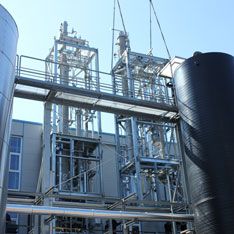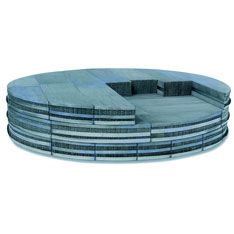Rectification
Rectification or counter current distillation is a process for the thermal fine separation of multicomponent mixtures. In contrast to simple distillation, part of the condensate continually runs counter to the vapour, thus allowing a high material exchange between the gas and the liquid phase.
Advantages of rectification
- high separation efficiency
- lower energy consumption than series-arranged distillations
Absorption
Absorption refers to the absorption of gases and vapours into liquids. A pollutant or reusable material is transferred from the gas phase into the liquid detergent phase and can be isolated in a further process step.
Advantages of absorption
- simple process conditions, usually ambient pressure and ambient temperature
- high gas flow densities and short holding time
- insensitive to concentration fluctuations

Columns
Rectification and absorption columns are similar in structure and loading. Depending on the separation task, different components that improve the exchange between gas and liquid are used.

Packings
For multi-component mixtures without precipitates or solid content, packings made of sheet metal, metal mesh or plastic are used. Their advantages are a low pressure loss and a high separation efficiency due to the even phase distribution.

Plates
If the product tends to crust or if large flow rate fluctuations occur, the column is optionally equipped with slot, cross-flow, bell or tunnel plates.
